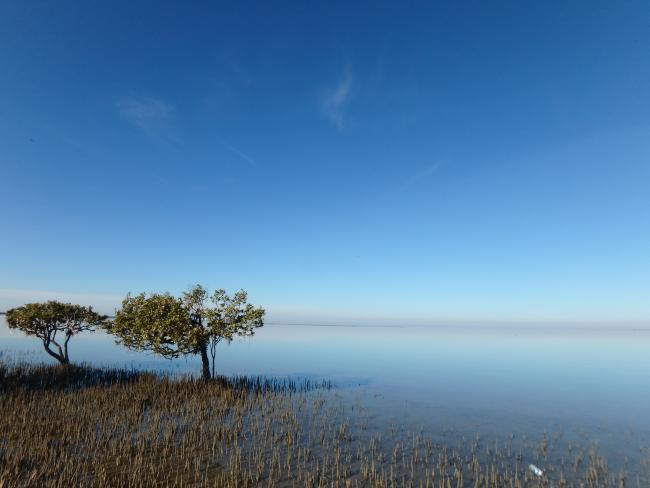Carbon that is retained within the coastal zone (blue carbon) has gained increasing interest among scientists, stakeholders and managers. Mangrove forests and seagrass beds have high retention rates of blue carbon and in addition can form connective seascapes where they can facilitate carbon accumulation between and within their ecosystems.
The overall goal of this project is to enhance our understanding of carbon interchange and cycling in connected ecosystems of the tropical coastal seascape at a global scale.
At the seascape scale we want to establish the physical, biological and chemical drivers of spatial distribution of carbon sequestration, carbon supply and carbon dioxide (CO2) release from the sediment. To achieve this we monitored sites in four different global regions to quantify how carbon cycling changes across global latitudes. In each location, measures of biological traits such as morphological characteristics of mangrove trees and seagrass plants were quantified. Physical-chemical characteristics of sediment, organic material and water such as sediment density, carbon content, sediment-air CO2 fluxes and stable isotopes have been determined in each ecosystem and within fluxes between ecosystems.
With this global data set, we can estimate stocks and interchange of carbon between mangrove forests and seagrass beds in tropical and subtropical places. This line of research is of upmost importance as there are large knowledge gaps in the global database of carbon cycling in connected mangrove forests and seagrass beds.
International Project Partners |
|---|
|
Prof. Ivan Nagelkerken (University ofAdelaide, Australia) Prof. Daniel Friess (National University Singapore, Singapore) Prof. John Kominoski (Florida International University, USA) |





